Both the elm and oak trees are magnificent trees that possess unique characteristics that have shaped landscapes, cultures, and industries for centuries. But which one of these trees is better and which one has more advantages, find out in this article as I explore “Elm VS Oak”.
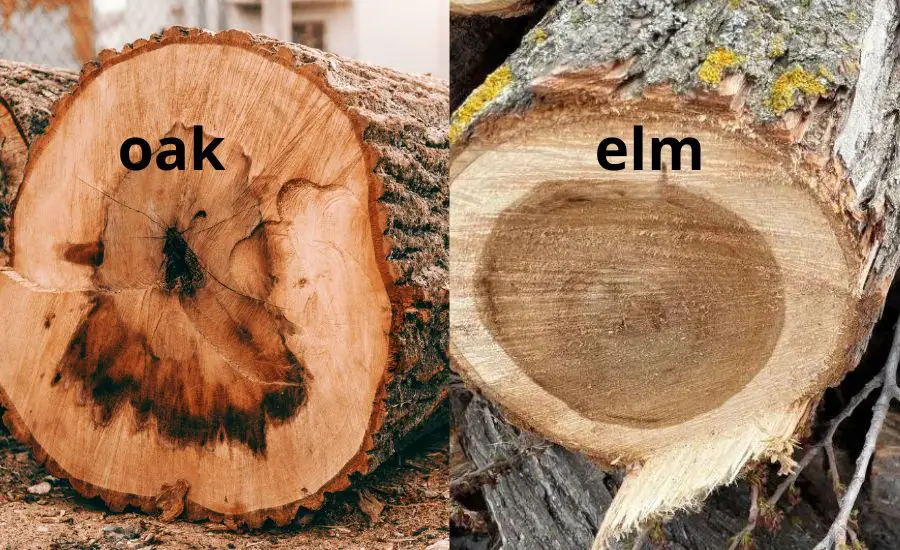
- Elm tree: overview
- Oak tree: overview
- Similarities between elm and oak trees
- Elm trees vs oak trees: differences
- Size: Elm vs oak
- Ecological importance: Elm vs oak
- Uses: Elm vs oak
- Hardness and durability: Elm vs oak
- Price: Elm vs oak
- Grain: Elm vs oak
- Sustainability: Elm vs oak
- Rot Resistance: Elm vs oak
- Odor: Elm vs oak
- FAQ
- What is the difference between oak and elm wood?
- How do you tell if a tree is an elm tree?
- Is elm a good wood to build with?
- Why is elm so popular?
- Conclusion
Elm tree: overview
The elm tree, belonging to the Ulmus genus, is an outstanding, enormous tree that is admired for its beauty, resilience, and historical significance. These deciduous trees have a rich cultural history and an important ecological role, they have adorned landscapes for centuries, serving as a representation of sturdiness, beauty, and strength.
Elm trees, which are found in temperate and tropical regions of the world, are members of the Ulmaceae family of trees. There are about 35 to 40 different tree species in the genus Ulmus, and they all have different sizes, shapes, and leaf structures.
Elm is a soft hardwood that showcases a diverse range of physical attributes.
Most elm trees typically feature broad, oval-shaped canopies with serrated-edged dark green leaves, this leaves might have a partial shade of yellow depending on the season.
Elms are large trees that can grow in a variety of environments because of their adaptability. They are indigenous to various parts of North America, Europe, and Asia. Because they can tolerate a variety of soil types, they are found in woodlands, along riverbanks, and in urban settings. They particularly prefer moist, well-drained soils.
Elm trees faced severe challenges with the outbreak of Dutch elm disease (DED) in the 20th century, before this occurrence the American elm tree was one of the most common trees in America. Other species of the elm tree include Scotch elm, English elm, and Wych elm.
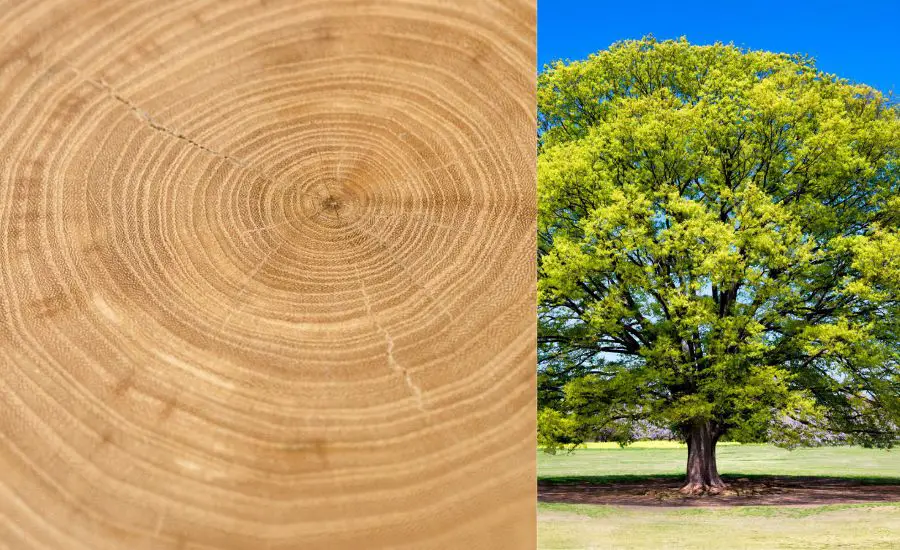
Oak tree: overview
Oak trees are among the most recognizable and adored trees in the world. These beautiful trees are well-known for their endurance, power, and variety of ecological contributions.
An oak tree displays a variety of physical characteristics, they have deep ridges, wide, spreading canopies, and glossy leaves that are colored in a variety of green tones that change to vibrant shades of light brown, yellow, and dark brown or light gray in the fall.
There are about 600 oak species in the genus Quercus, which are found throughout the Northern Hemisphere. They differ considerably in terms of size, shape, leaf structure, and habitat preferences.
Oaks are part of the Fagaceae family, which includes trees and shrubs known for their distinctive fruits and prominent place in forest ecosystems.
Oak wood face threats from habitat loss, diseases like oak wilt and powdery mildew, as well as pests such as oak borers.
An oak tree exhibits remarkable adaptability and can thrive in diverse habitats, they are native to regions across North America, Europe, Asia, and North Africa, displaying a preference for well-drained soils in forests, woodlands, and even urban environments.
Because it supports a diverse range of vegetation and wildlife, the oak tree plays an important ecological role.
Their abundant acorns provide sustenance for wildlife, including squirrels, deer, birds, and insects. Because the dense foliage provides cover and places to nest, it greatly enhances the richness of their environments. Additionally, oak woods play a significant role in reducing climate change.
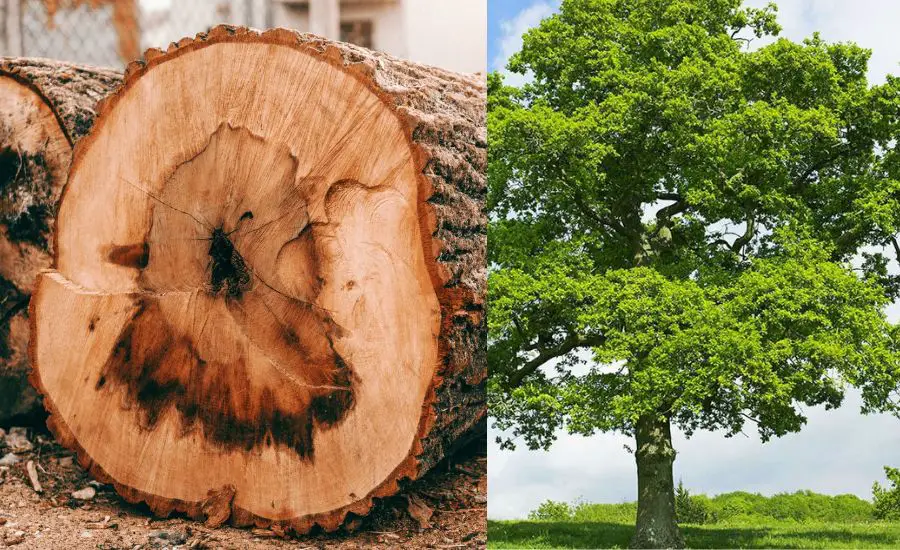
Similarities between elm and oak trees
Elms and oak trees have similarities in several physical characteristics like their huge size and importance in the ecosystem. Both usually have wide, spreading canopies that offer shelter and shade. Their leaves exhibit bright colors in the fall, drawing recognition for their seasonal display despite their differences in shape and structure.
Furthermore, the bark of both trees changes with age, going from being smooth and young to being heavily furrowed in maturity.
Elm and oak trees are important for maintaining ecological stability and biodiversity. Their vast canopies serve as habitats, offering food, cover, and places for breeding for a variety of wildlife species.
In addition, these trees’ seeds provide vital food for wildlife, which contributes to the intricate web of relationships that exists within both environments.
Despite belonging to separate genera, both oak and elm trees fall under the broader classification of flowering plants in the family Fagaceae. Oak and elm wood have been prized for their durability, strength, and versatility. Throughout history, both have been used in construction, shipbuilding, and various crafts due to their excellent timber quality.
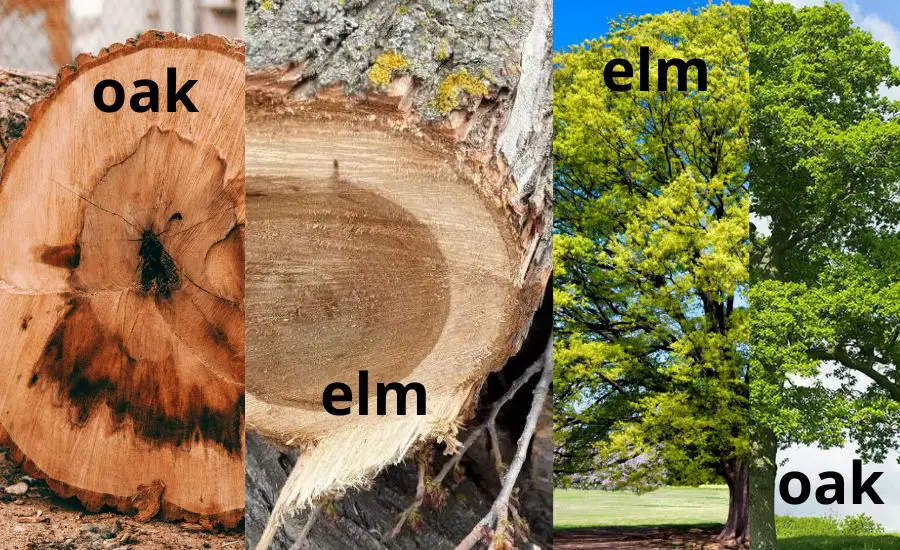
Elm trees vs oak trees: differences
Though oak and elm trees are both versatile and strong trees, they differ in many ways and excel differently across many aspects, some of these aspects and the elm and oak differences are explained below.
Size: Elm vs oak
Oak and elm trees differ considerably in height, canopy spread, and size. Elm trees normally grow to a height of 50 to 85 feet, while under optimal conditions, several species can reach heights of more than 100 feet. Size is one of the major elm and oak differences usually considered.
Oak trees are renowned for their large size and lifespan, some oak species can grow to heights of more than 100 feet. Examples of these species are the white oak and the bur oak, which can grow to heights of up to 150 feet. They cast a lot of shade since their canopies are large and frequently wider than they are tall.
You should note that factors such as environmental conditions, soil quality, access to sunlight, and regional differences influence their growth rates and ultimate sizes.
While both genera encompass species of varying sizes, oaks are generally known for their impressive stature and extensive canopies, often surpassing elm trees in height.

Ecological importance: Elm vs oak
Oaks produce acorns which serve as vital food sources for wildlife. Squirrels, deer, birds, and small mammals heavily depend on these nutrient-rich seeds for food.
Oak and elm trees are both vital to the soil health and stability. Their deep root systems help to stop soil erosion, particularly in regions vulnerable to landslides or erosion. By anchoring and strengthening the soil’s structure, these deeply ingrained roots lower the likelihood of soil degradation.
Their presence in forests and woodlands aids in reducing temperatures, increasing humidity, and influencing microclimates.
Uses: Elm vs oak
Uses is another important factor to consider when evaluating elm and oak differences.
Both elm and oak woods have long been prized for their durability and strength, making these tree species desirable choices in construction and timber industries. Elm timber, valued for its flexibility and resistance to splitting, was used in shipbuilding, wagon wheel construction, and making wood pulp.
Oak wood is also valued for its robustness, hardness, and distinct grain patterns, which remain a cornerstone in construction. It is used in structural beams, flooring, paneling, furniture, cabinetry, and decorative woodwork.
Due to their natural resistance to decay and moisture, both elm and oak woods find extensive use in outdoor applications
Because of its distinct grain patterns and inherent resistance to splitting, elm was a popular material for making fine furniture, including tables, chairs, chests, and chairs. Because of its workability, you are easily able to create complex, beautiful designs.
Highly valued for its durability and visual attractiveness, oak is still a dominant wood used to create high-quality furniture.

Hardness and durability: Elm vs oak
Although elm wood is not as hard as oak, different species exhibit distinct ranges of hardness. The Janka hardness of elm wood usually ranges from 700 to 1,000 pounds-force (lbf), depending on the species and growth conditions.
Oak wood is prized for its extraordinary toughness, particularly white oak and northern red oak. With a hardness rating between 1,200 and 1,350 lbf, white oak is ranked higher on the Janka scale and is widely recognized for its exceptional strength and durability. Red oak has a hardness of 1,200 to 1,300 lbf, which I consider very impressive.

Price: Elm vs oak
Because oak wood is harder, more durable, and of greater quality, it’s generally more expensive. Because it is selected for use in upscale furniture, flooring, and specialty applications, white oak, which is well-known for its strength, water resistance, and unique grain patterns, is generally priced higher than most woods alike.
While oak wood has a simple, straight grain, elm wood is prized for its unique patterns. However, Dutch elm disease caused challenges for elm wood, making high-quality elm lumber scarce. elm wood is more expensive compared to oak trees due to its reduced supply and possible quality differences.

Grain: Elm vs oak
The Elm tree is a deciduous tree with a fascinating grain pattern, characterized by swirling and interlocking grain lines, the grain of this tall tree contributes to its distinct appearance, creating intricate and irregular patterns across the surface of the wood.
Elm wood species differ greatly in their grain patterns, some have more prominent patterning, while others have more subdued, straighter grain.
The oak tree is also popular for its prominent growth rings and medullary rays in its grain patterns. The rays in oak create a highly recognizable and often sought-after figure, especially in quarter-sawn oak.
Oak has a variety of flecks and rays in its grain patterns, which add to its attractiveness and make it a highly sought-after material for furniture making, flooring, and decorative woodworking.
Sustainability: Elm vs oak
Despite the Dutch elm disease’s negative effects on elm tree availability, elm trees are now highly sustainable. Efforts in disease-resistant cultivars and responsible forestry practices have contributed to their sustainable cultivation and use.
Oak trees, being more widely distributed and cultivated, might have a more consistent supply chain compared to certain elm species affected by disease, regional limitations, or other factors
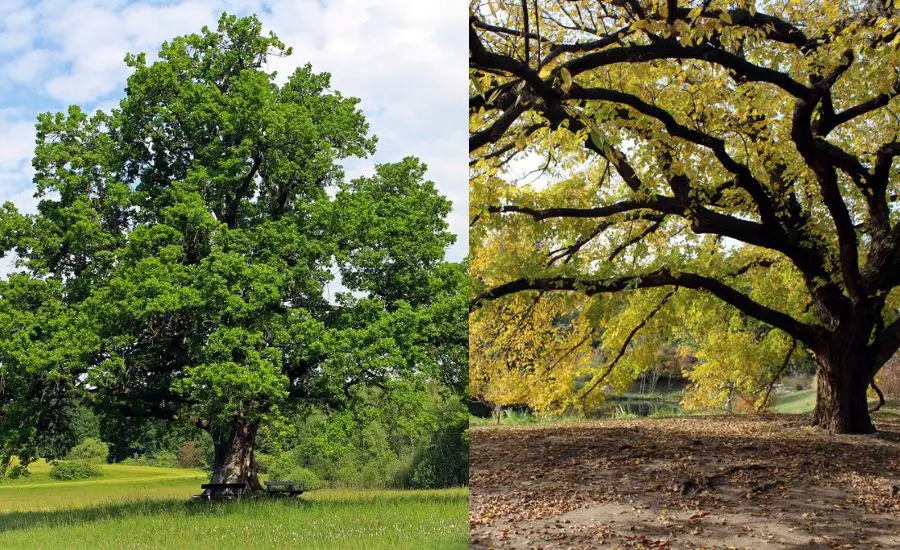
Rot Resistance: Elm vs oak
Elm and oak woods both exhibit exceptional resistance to rot and decay, which adds to their durability and versatility. Elm wood has moderate resilience and is a soft hardwood that has always been esteemed for its natural resistance to water and decay, especially in species like American elm.
Notable for its remarkable longevity, oak wood exhibits remarkable resilience against fungal infections, deterioration, and insect attacks.
Because of its tight cell structure and high tannin content, white oak in particular exhibits great water resistance, making it a highly sought-after material for outdoor applications and marine use.
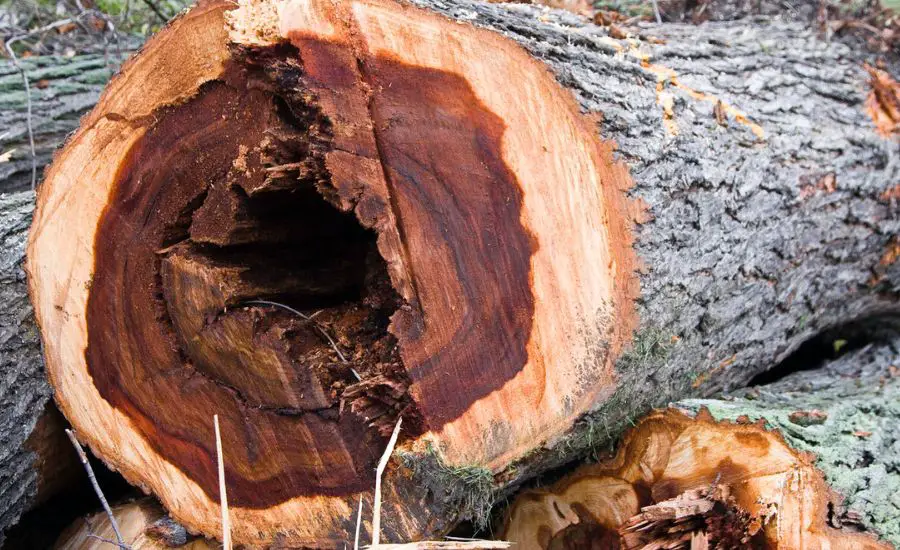
Odor: Elm vs oak
Elm trees have a moderate, delicate scent, they also have a graceful appearance and unique wood grain. Elm wood’s smell is often described as being slightly sweet, earthy, and having a subtle, pleasant scent. However, different elm species have different levels of odor intensity, which is controlled by factors like moisture content and environmental conditions.
Oak trees have a stronger, more unique scent. Many people describe the smell of oak wood as earthy, rich, and slightly spicy. Freshly cut oak lumber has an especially strong smell because of the wood’s inherent oils and compounds, which emit a strong scent.
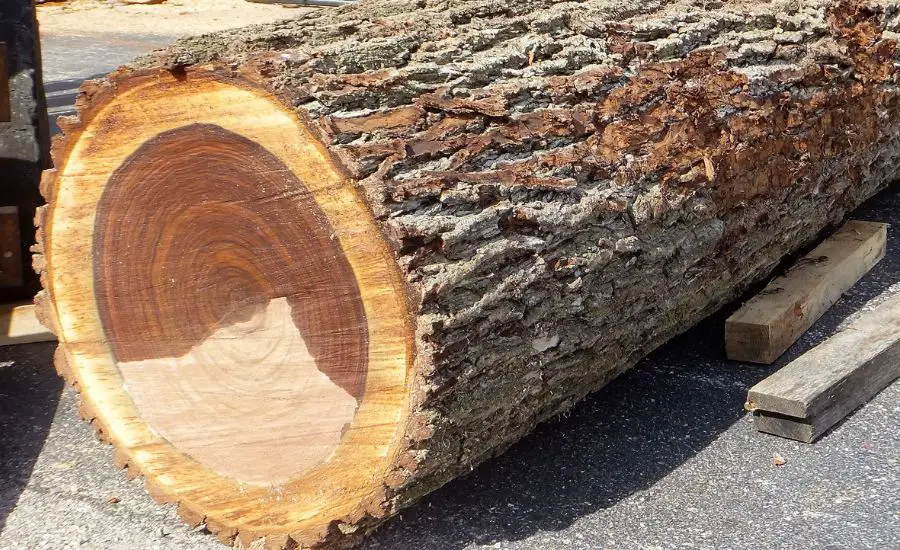
FAQ
What is the difference between oak and elm wood?
An oak tree is likely to be taller than an elm tree and oak trees are generally more stronger and durable than elm trees.
How do you tell if a tree is an elm tree?
Elm trees are large, deciduous trees that have distinguished, rough and pointed, oval-shaped leaves with saw-toothed edges
Is elm a good wood to build with?
Yes, elm logs are considered excellent for building and furniture construction due to their remarkable durability.
Why is elm so popular?
Elm trees are widely used and extremely popular due to their remarkable hardness and easy access.
Conclusion
Both trees contribute immensely to ecosystems, offer valuable resources, and work in countless applications. Ultimately the better one between the two depends on your personal preferences and your area of interest.

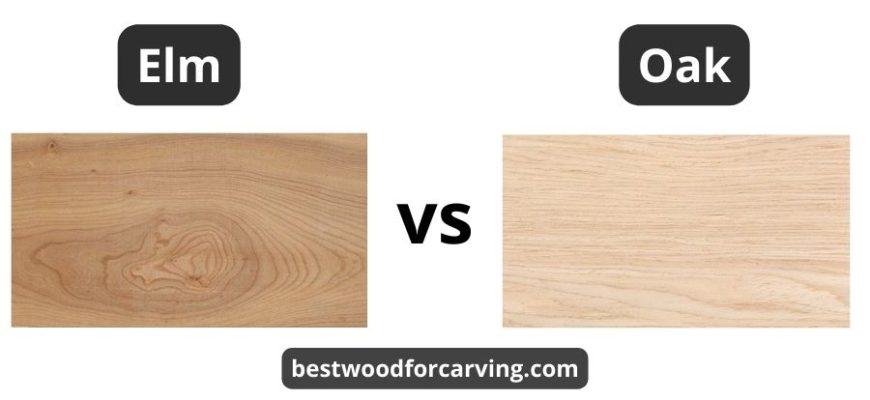
![Sapele vs. walnut wood [5 main differences] Sapele Vs. Walnut Wood: Top 5 Differences & Best Guide](https://bestwoodforcarving.com/wp-content/uploads/2024/01/wood-53-335x220.jpg)
![Mango wood furniture pros and cons [9 tips] Mango wood furniture pros and cons + 9 tips before you buy](https://bestwoodforcarving.com/wp-content/uploads/2024/01/wood-51-335x220.jpg)
![Which advantages and disadvantages of hickory wood? [8 factors] Top 8 Disadvantages Of Hickory Wood: Best Helpful Guide](https://bestwoodforcarving.com/wp-content/uploads/2024/01/wood-38-335x220.jpg)


![How Long Do Wood Pellets Last? [6 Essential Insights Unveiled] How long do wood pellets last](https://bestwoodforcarving.com/wp-content/uploads/2023/12/How-Long-Do-Wood-Pellets-Last-6-Essential-Insights-Unveiled-2-335x220.jpg)
![Tung oil vs polyurethane [4 main comparison factors] Tung Oil Vs Polyurethane: Top 4 Factors & Best Helpful Guide](https://bestwoodforcarving.com/wp-content/uploads/2023/12/wood-14-335x220.jpg)
![Is tung oil flammable? [7 Preventive measures] Is Tung Oil Flammable: Top 7 Safe Tips & Best Guide](https://bestwoodforcarving.com/wp-content/uploads/2023/12/What-is-a-Wood-Planer-3-335x220.jpg)
